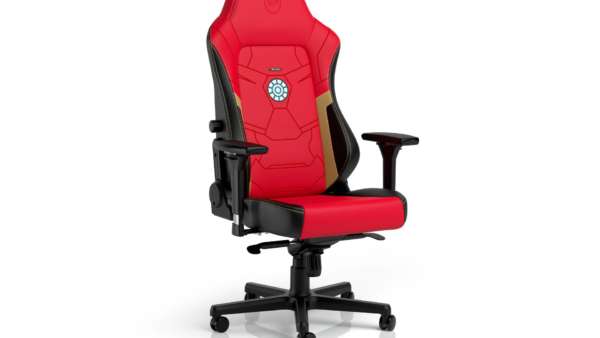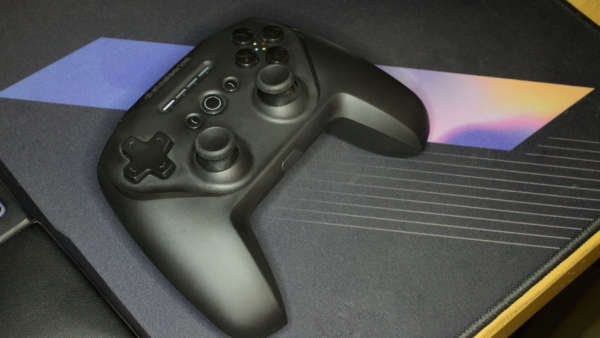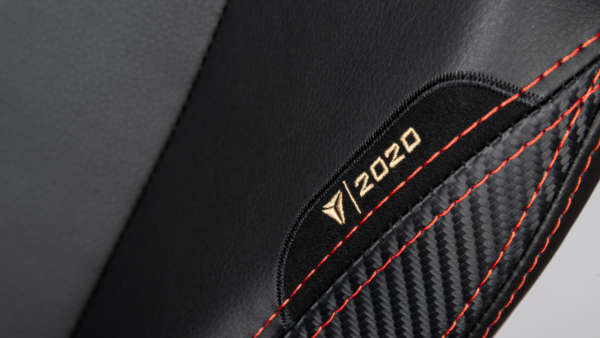Introduction
As the top tier of SteelSeries’ H-series, the 9H needed to make more of an impression after our tepid response to the 5HV3. Advertised as being a “premium tournament gaming headset”, SteelSeries can certainly talk big. Thankfully, it wasn’t an empty promise as the SteelSeries 9H is a damn fine headset when it comes to making that £130 worth every penny.
Packaging and Extras
Sticking to a simple theme of black, white and contrasting orange, the box is imposing, if a touch minimalist. It classy, knows it and doesn’t mess around with brightly coloured logos and vulgar clashing colours. If it weren’t for the SteelSeries branding, your eyes could pass right over it without realising. While this isn’t necessary a bad thing, the packaging doesn’t leap of the shelf in the same way a piece of Razer kit does.

Opening it up reveals a plastic black casket-esque packaging in which the 9H is safely housed. Along with it comes a quickstart manual that recommends which connectors to use for different devices, as well as the small jumble of leads and input cables.
The Headset
Getting straight down to brass tacks, the SteelSeries 9H looks fantastic. The black leather and orange stitching, as well as the grey and black plastic, both look and feel high quality, matched by the level of comfort while wearing them. The cups fit cosily over the ears, with the cushioning resting on top of the head. This makes the 9H suitably for extended use, which is especially useful for those overly long multiplayer matches.

All the aforementioned leads are woven fabric cables, continuing the black and orange colour choice. The durable coating, and decent length (2M+) give the overall look a nice finish. The cords all fight tightly together as you clip pieces in and out to suit your needs, with little to no chance of a piece slipping out of place to interrupt the audio unless you are actively trying to break them (no idea why you would do that).
Connection to any device is short and painless, unless you are want to get the most out of them. The first two, a combo 1/8 audio jack as well as separate mic and speaker jacks, can be plugged in and used right away. When used this way the SteelSeries 9H has a high quality of sound but it can’t be used to the standards that it was designed for. Using a USB slot, the 9H comes equipped with its own sound-card which boosts the performance for anyone who isn’t a semi-major audiophile that already owns a top line audio card. For anyone who is, well you are a bit out of luck. There is no way around using the built in soundcard without forgoing the USB connection and using the lesser inputs. For the vast majority, the soundcard does a great job at providing clarity and depth to the audio.
The only real downside is the 7.1 Dolby Audio, which can seem a bit lacklustre unless you spend some serious time tweaking with the balance settings. If left unchanged it can sound tinny and flat. I found the preset “performance” setting worked best, going above and beyond what I expected by that point. If it wasn’t for this setting I would have considered turning off the feature entirely, but after discovering this it became a viable option to use when I wanted to add that extra bit of immersion from the audio.

The last inclusion is the microphone. Retractable from the left ear-cup, it at first looks looks like something Robocop would pull out, but in practice it’s a rather awkward way of retrieving it and ends up being even worse to put back. It sits rather far away from the mouth due to the short length of the mic cable. The sensitivity more than made up for this, almost to its detriment when it picks up someone hiccuping on the other side of the room. If this headset is made for tournament play this is a major shortfall. There is no way the 9H can be used by a professional (it’s professional if they get paid to do it), if everyone can hear everything happening through your mic. In 90% of other situations this would be a tiny issue, but if it is advertised as “tournament grade” then it should be held up to its own standards. The mic noise reduction option helps somewhat to remedy the problem, but more options to customize it to individually situations and standards would have been better. This is a minor problem for the average user however, and shouldn’t be held against the 9H if you don’t plan on using it at an event.
Software
Thankfully, the SteelSeries Engine 3 which the headset uses is astoundingly easy to use. Where as most peripherals have jumbled messes of cluttered UI interfaces, playing around with the 9H to my preferences was extraordinarily simple. Even if you don’t want to sit there playing with the few settings you do have, the previously mentioned presets remove most of the fuss. These options are only available through the use of the USB input however, so if you want the personal experience, go that way.

Conclusion
The SteelSeries 9H just falls short of its own standards but only because the mic is more sensitive than the Dota 2 fanbase. If you are looking for a headset for that sort of environment, look elsewhere. For everyone else however, the 9H is a great investment. It offers clear, high-detail audio, as well as a classy and durable design that fits the premium price tag. For the non-esport player this is a great purchase.








